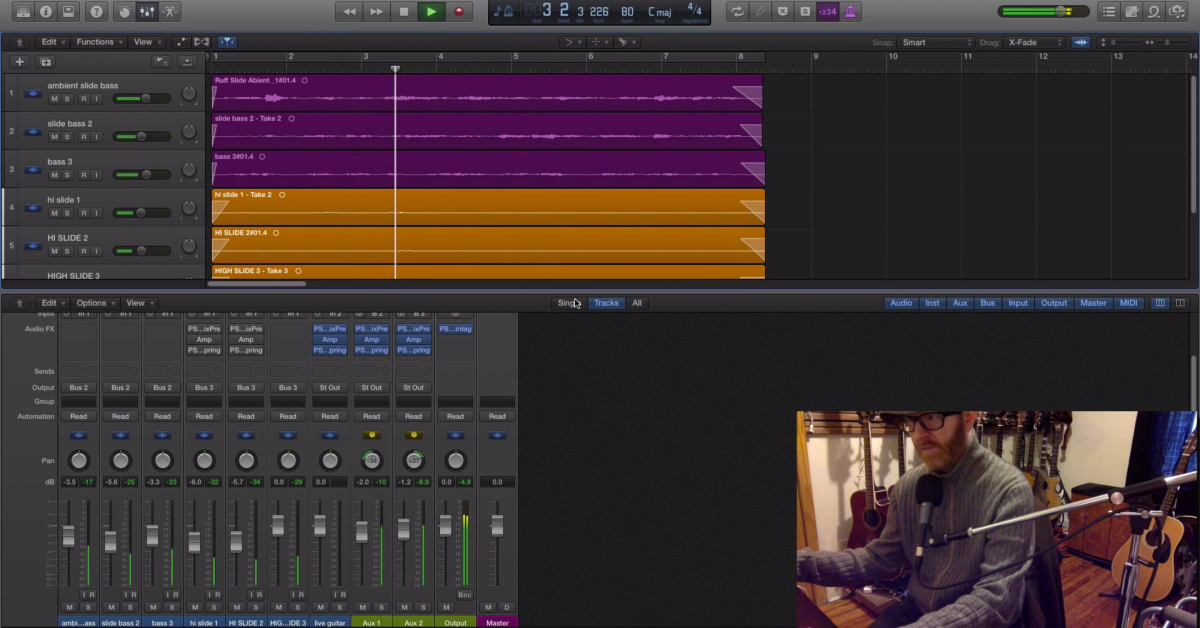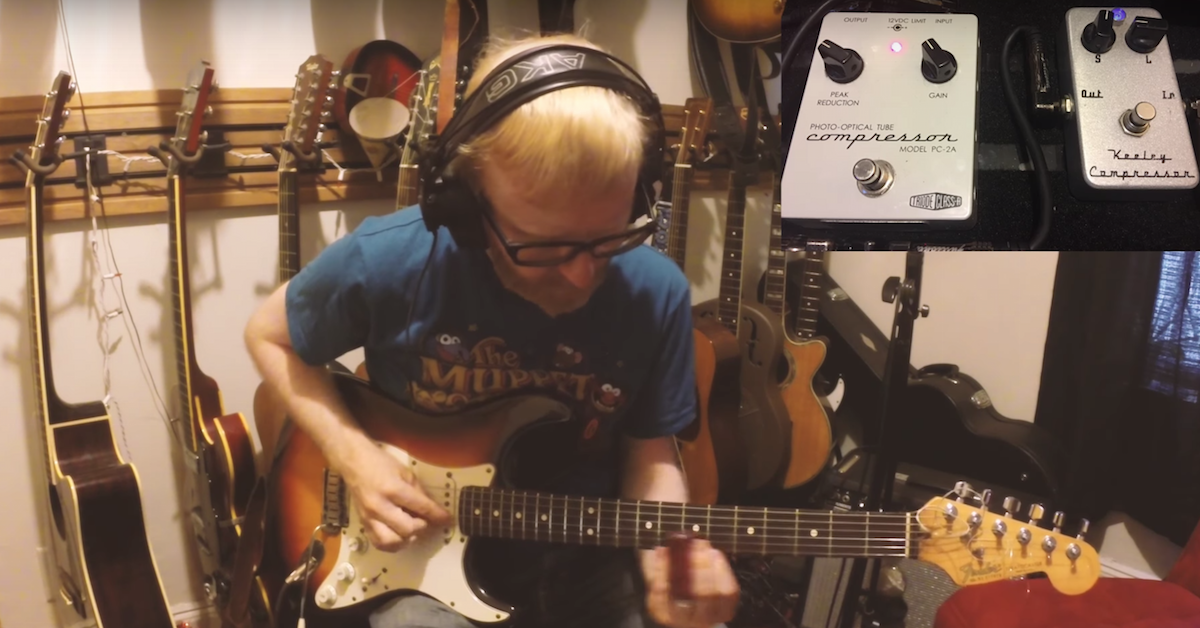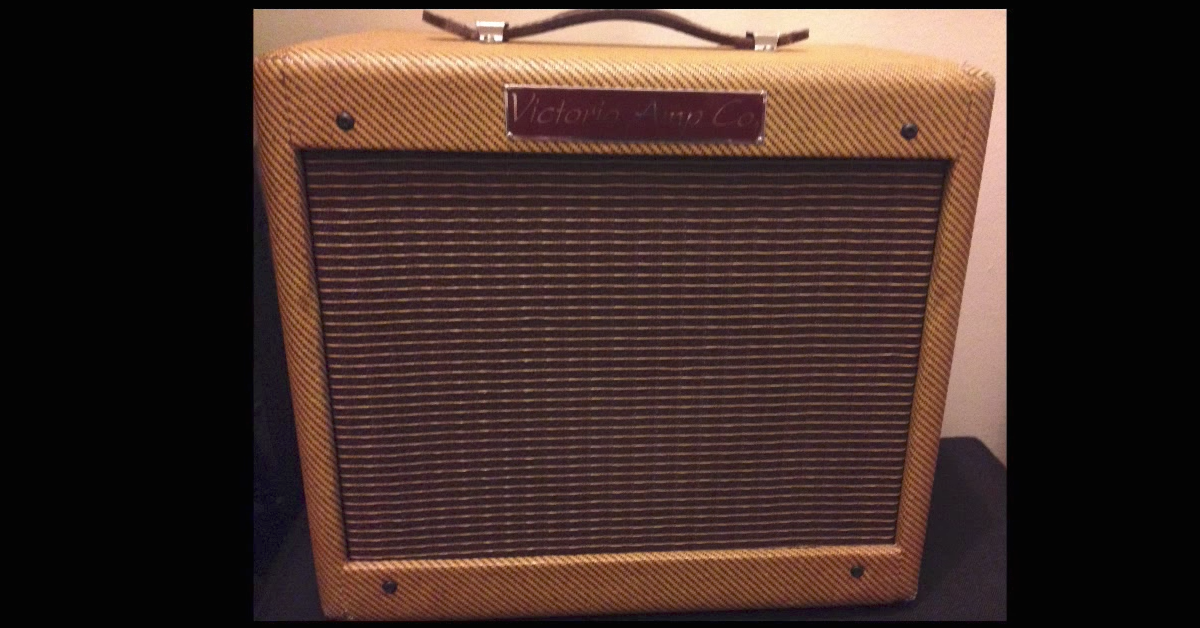10 Tips for Getting a Better Slide Guitar Tone
Article Content
One question I consistently get asked is how to capture a better slide guitar tone. It seems simple enough. But, as most find, it’s a bit elusive.
The tone varies based on the player and the gear. Remember, those two elements work hand in hand.
I always like to remind people that there are no rules in music. However, there are a few paths we can go down to get desired results.
1. The Player
There are many ways to play slide guitar: with a pick, thumb pick or fingers.
Each of these methods will greatly alter not only the dynamics of the instrument but also the tone.
Fingers tend to be the most mellow in tone. Picks of any kind bring out a lot of attack.
2. Picking Hand Muting
Playing with your fingers also gives you the option to mute strings that you’re not playing with your picking hand. This can help eliminate noise and unwanted sympathetic string resonance.
3. Muting Behind the Slide
An experienced slide player will choose when to mute (place a finger down on the strings) behind the slide. This controls the rattle sound a slide can make. It also tends to mellow the tone.
Which method you choose tends to be situation specific.
When I want a big delta sound, I don’t mute. When I tend to play more delicate single-note melodies, I tend to mute. You have to experiment and be able to assess what you like or don’t like about a current tone.
4. Amps
Tweeds tend to be my favorite amps for recording slide. They have a really nice midrange character. This is wonderful for slide. Too much midrange scoop and a slide part will sound thin, hollow and appear to disappear.
It’s for this reason blackface fender amps aren’t my go-to for clean slide tones. They start to work better as they break up, but still not as nice as an amp with natural mids.
When I use blackface or silverface amps, I tend to use a pedal to help resuscitate the mids.
To some degree, it’s harder to get a good clean sound than a dirty slide tone.
5. Compression Pedals
There is a debate about where to put a compressor in your chain. I like a little before the amp and sometimes a dab after.
I believe the rule here is to not use too much before the amp. This is a common mistake that people make with pedal compressors. A little goes a long way. The key isn’t to completely squeeze it, just to focus the tone.
I rarely use a compressor to control dynamics. I do use it for more sustain on clean tones. I tend to only use a pedal compressor if I’m recording a clean slide tone.
My favorite pedal compressor for the slide is the Effectrode PC-2A tube photo-optical compressor. It’s really musical.
In the past, I’ve struggled with a lot of pedal compressors. The Keeley 2 Knob is pretty good but is still kind of aggressive in a way I don’t like. The Wampler sounded clean in a solid state way for me. I didn’t like that.
You have to find what’s right for you.
6. Post Mic
I will then sometimes place an 1176 post-amp to further refine the tone.
Both compressors aren’t doing much. If the needle on the 1176 is jumping around, you’re adding too much. Unless you’re going for that effect.
7. Slides
Glass, porcelain, brass, chrome … they all have different characteristics. I keep one of each on hand. The important thing to remember is, not one element on its own is going to make “the” difference. It’s a sum of parts. This is why it’s important to have a clear overview of the whole chain.
My personal preference is glass and porcelain. It doesn’t mean it will be yours. Experiment.
8. Overdrive
There are several ways to explore getting a dirty slide sound. We must first assess what era of tone we’re looking for. 50’s muddy waters? 70’s George Harrison?
They each will lead us to different places. For a 50’s to early 60’s tone, I tend to lean on amp overdrive. If I can’t push my amp I will use a very light overdrive that doesn’t cut much low end.
When I can’t push my amp into overdrive, I’ve had success with a few overdrive pedals. Remember that midrange discussion?
The same applies to pedals. I would veer away from pedals that suck out the mids. A little compression and mids will compliment your tone. Pedals like a TS9 and a Klon do well. Overdrives are like underwear. It’s personal. There are many to choose from.
9. Gainiac
When it comes to getting a more modern heavy tone, I’ve found it difficult. If you don’t have an amp that has a high gain channel, you have to go on the hunt for a pedal. The problem is, many are noisy and thin sounding.
I’ve been using the Empress Heavy pedal. It not only has a great sensitive noise gate in it, but also a lot of depth. There is also a lot of control over boosting or cutting the mids.
10. Mics
I do tend to favor ribbon mics for slide. I find them much less harsh than an SM57. Many ribbons will work. I use a Cascade Fat Head II which is a fantastic, affordable mic.
Move that mic around. Don’t let your eyes tell you what sounds best.
If you consider all of these elements there is no reason why you can’t capture a fabulous slide tone.





